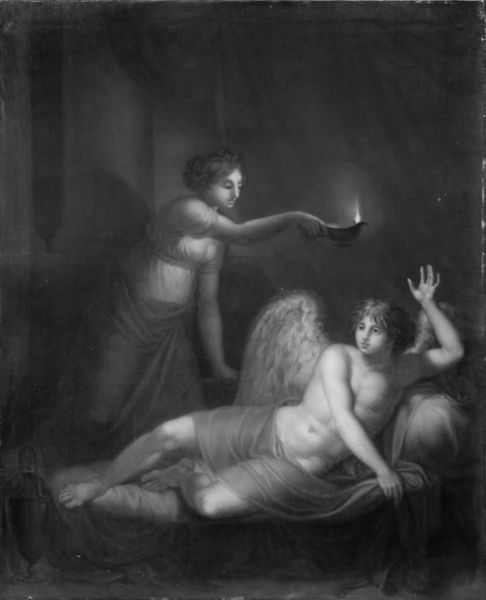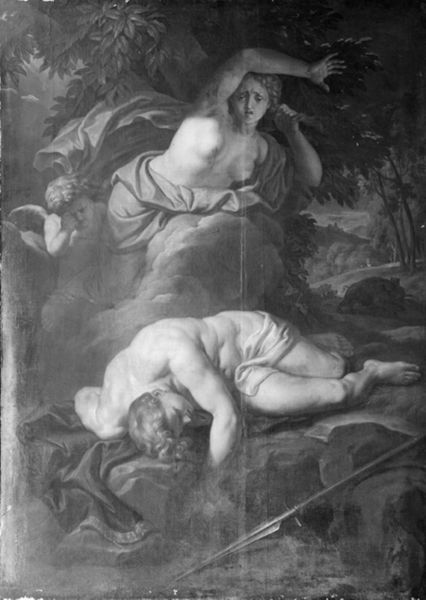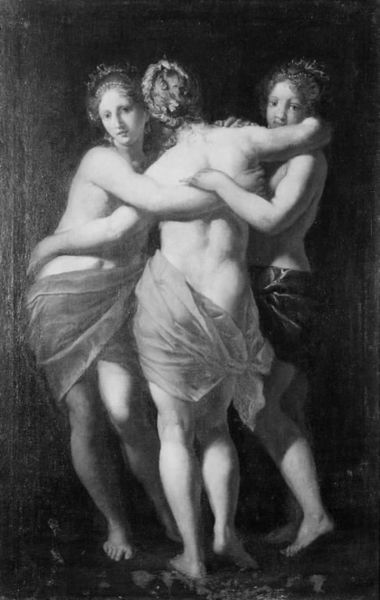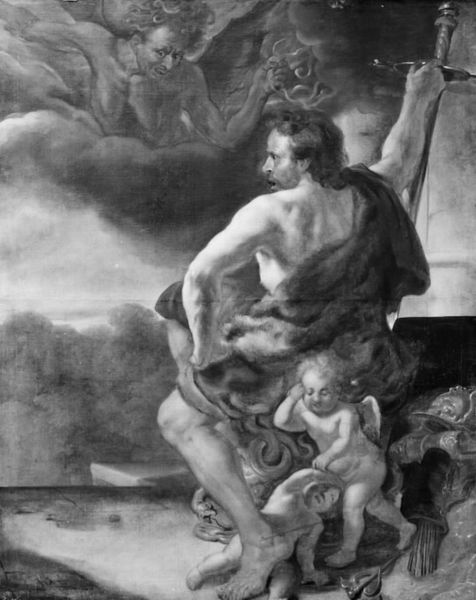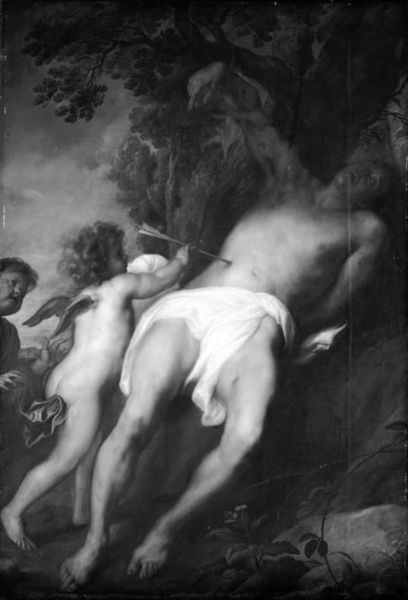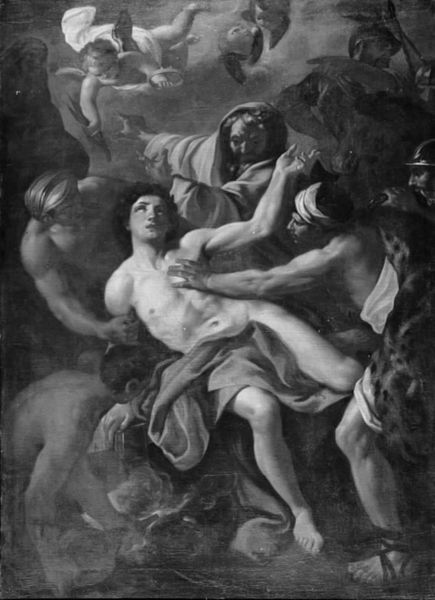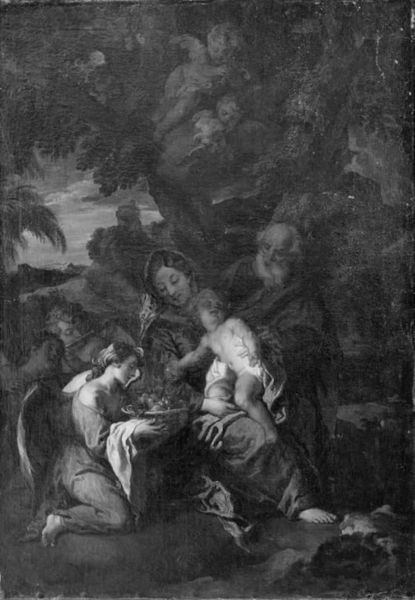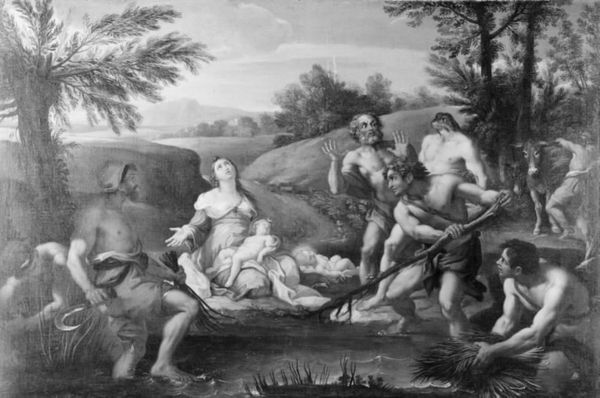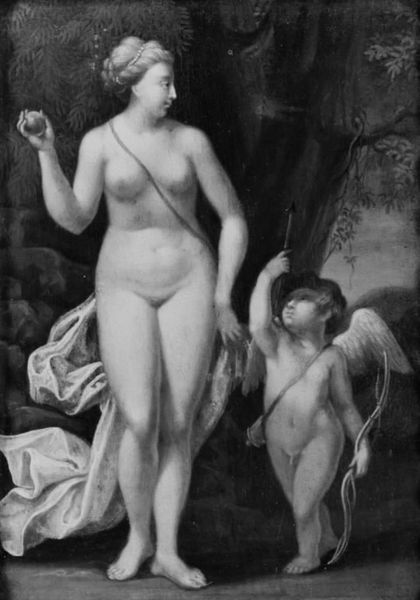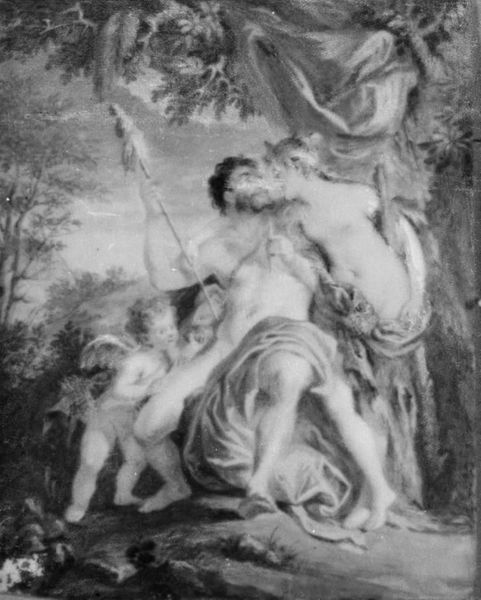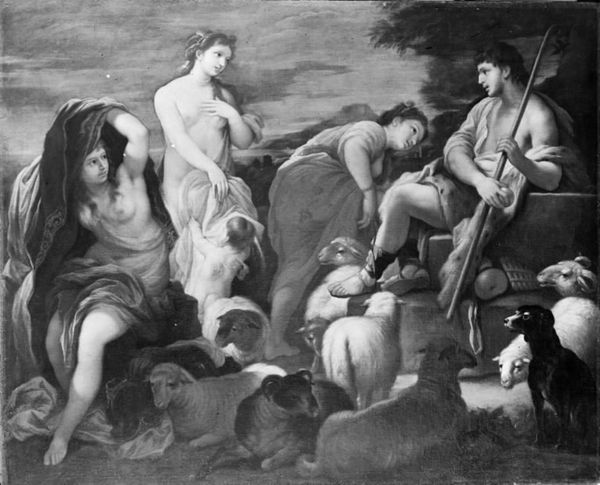
Dimensions: 107.5 cm (height) x 127 cm (width) (Netto)
Art Historian: We are looking at “Joseph and Potiphar’s Wife,” a Baroque painting, created sometime between 1748 and 1848. Curator: It's immediately striking, this scene. The implied narrative seems charged, the textures in the fabric feel almost claustrophobic. Art Historian: Yes, this is an image deeply rooted in a particular moralistic worldview. It's visualizing a scene from the Book of Genesis. Joseph, an enslaved man, is depicted fleeing the advances of his master's wife, Potiphar. Look at the details! What meanings do you perceive embedded in their interaction? Curator: The dichotomy is stark. Here’s a powerful woman, draped in what appears to be luxurious fabric. It is in juxtaposition with Joseph, trying to escape, rendered in considerably darker tones. The story itself reflects patriarchal power dynamics and sexual double standards. Art Historian: Certainly. Potiphar’s Wife traditionally embodies the trope of the deceitful, lustful woman, an archetype we see across centuries. Note the discarded shoe by her feet, a recurring symbol. In dream interpretation it is symbolic of a woman searching for the right husband or partner; it’s not simply incidental, is it? The artist invites the viewer to reflect on Joseph's righteousness versus her betrayal of her husband. The tension! Curator: Yes, that discarded slipper feels loaded. I cannot help but see how it sets a tone. And note how she clutches his garment—evidence, in her perspective—of Joseph’s "wrongdoing." Consider who the painting would have been originally made *for,* and what lessons were extracted from this scenario time and again. It echoes through history, informing laws and shaping perspectives. Art Historian: I agree completely. By visualizing it, it becomes a repeated lesson, reaffirming prevailing beliefs. A scene from Genesis has so many dimensions; its visual depictions amplify meaning far beyond the literal narrative. Curator: Looking at this today compels us to ask what elements endure. Who retains, or who seizes power, and how does that resonate across gender, race and status in societies then, and now? Art Historian: Very well articulated. In short, we’re challenged to not only consider the Bible, but how images influence what we choose to believe. Curator: Exactly, we began by seeing one thing but have ended up seeing so much more within that first glance. It makes you rethink the old tropes and how they affect the new realities.
Comments
No comments
Be the first to comment and join the conversation on the ultimate creative platform.
